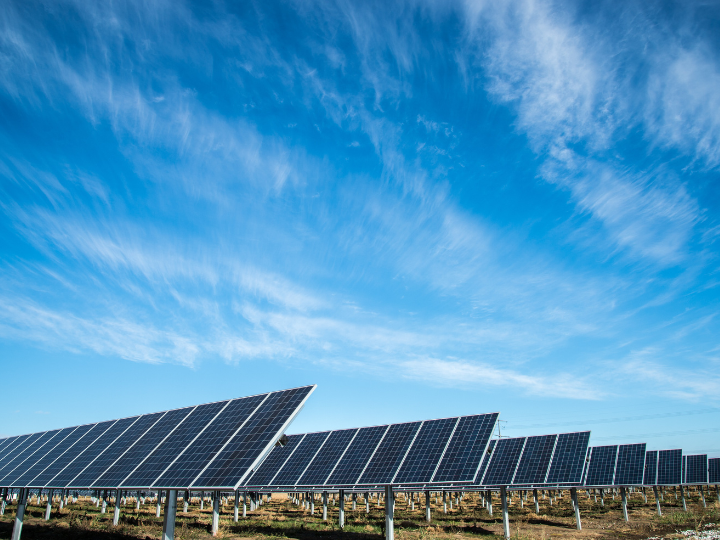by Frederic Simon*
The mishap around the European Sovereignty Fund has exposed the fault lines in the EU’s approach to industrial policy. How to fill the gap – and compete on par with the US and China – will be a central theme for the 2024 European elections.
EU Commission chief Ursula von der Leyen took many by surprise when she announced last year that the EU executive would table a proposal for a European “sovereignty fund” before the summer.
“We want European industry to keep leading in the green transition. This is why I introduced the idea of a sovereignty fund,” von der Leyen said in a speech to Parliament on the eve of an EU leaders’ summit on 15 December.
“We need to galvanise our strong European industrial power in the global fight against climate change. And that calls for common European industrial policy with common European funding,” she added, saying the Commission would table a proposal “around summer” as part of a wider EU mid-term budgetary review.
The result, as many had feared, was underwhelming.
Instead of a mighty sovereignty fund, the EU executive did what it knows best and unveiled a new website with a new acronym, the Strategic Technologies for Europe Platform (STEP).
More importantly, there was no extra money on the table to rival the US Inflation Reduction Act and its $370 billion in cash for clean energy investments. Instead, the Commission chief said the money will be rehashed from existing EU funds, with a proposed €10 billion top-up coming from EU member states’ coffers.
Even if EU countries agree to the proposed budgetary top-up – which looks uncertain at best – the EU’s green industrial policy budget will look miserable compared to the hundreds of billions put forward by the US and China.
“We have limited budgets,” von der Leyen said, as if admitting defeat.
The fundamental reasons behind this are well known. While poorer EU countries want a fund allowing them to catch up with the rest of the EU, “richer member states – who might be expected to benefit most since they have more start-ups – may not see the need for such a fund,” said Zach Meyers, a research fellow at the Centre for European Reform (CER).
At the end of the day, too many countries were against the idea of holding another round of budgetary talks, which are always divisive at the EU level.
While France has backed the idea of a large fund financed by common European debt, other member states like Germany and the Netherlands argue there is still plenty of unused cash in the EU’s €800 billion COVID-19 recovery fund.
The resulting flop was all the more predictable, observers say.
“It’s clear that the initial ambition of creating a sovereignty fund at EU level to respond to the US Inflation Reduction Act has quickly vanished,” said Simone Tagliapietra, a senior fellow at the Bruegel economic think tank in Brussels.
What remains in terms of clean tech funding in Europe is mainly state aid, which is covered by national budgets and can now happen more easily thanks to the Temporary Crisis Framework adopted in March last year in response to the COVID-19 pandemic and the Ukraine war.
However, this means national spending is not counterbalanced at the EU level by an instrument ensuring cohesion and scale among the 27 EU member states, Tagliapietra warned.
“And that leaves Europe in a situation where member states with more fiscal space can spend more than others, which is problematic from an internal market perspective because it creates fragmentation,” he says.
“Looking at this proposal and the Net-Zero Industry Act – which is weak in terms of governance and focuses mostly on permitting – it’s now clear that the EU’s green industrial policy response, for now, has been pretty weak,” Tagliapietra told EURACTIV.
Yet, the need for a green industrial policy is unlikely to go away. If anything, it is going to be felt more strongly as the EU moves closer to its objective of reducing emissions to net zero, which requires a complete transformation of the European industrial landscape.
In the absence of a sufficient EU budget to counterbalance national state aid for clean tech, the European Commission will also eventually be left with no choice but to reintroduce stricter rules on state aid, which will hinder the capacity of Germany and France to support their national clean tech champions.
Resistance against a genuine European industrial policy has always tended to come from big EU member states like Germany, who think they can move faster than others to secure jobs and growth for themselves.
But even if larger eurozone economies can score a few wins, they will always lack the scale to compete against China and the US in the global clean tech race.
“There is no viable German, French, Italian or Spanish answer here; Europe can only be competitive globally with a common answer that creates an edge for European companies on global markets,” Tagliapietra said.
“Without a strong European dimension, EU countries will only end up cannibalising each other. And that certainly won’t help Europe gain a competitive edge in the global race for clean tech,” he argued.
As we get closer to the European elections in June 2024, the question will therefore inevitably return on the EU’s agenda, Tagliapietra predicted.
“It will be up to the new EU institutions after the European elections to do that. And if we don’t do that, I think Europe will face problems in the future because the EU economy is carbon-intensive.”
*first published in: Euractiv.com




 By: N. Peter Kramer
By: N. Peter Kramer

